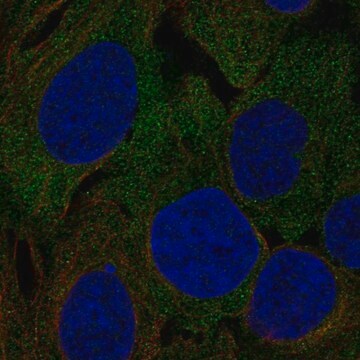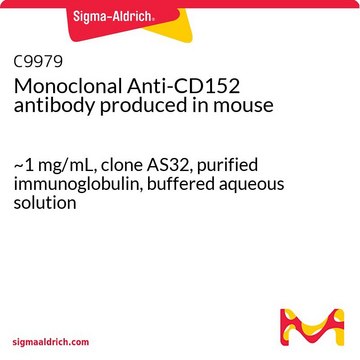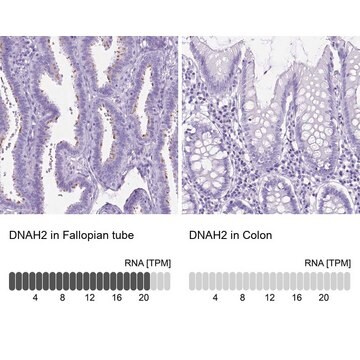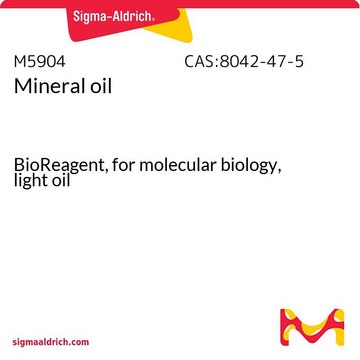04-963
Anti-CTLA4 (CD152) Antibody, clone 9H10
clone 9H10, from hamster
Sinónimos:
CD152 antigen, Cytotoxic T-lymphocyte-associated antigen 4, celiac disease 3, cytotoxic T-lymphocyte-associated protein 4, cytotoxic T-lymphocyte-associated serine esterase-4, ligand and transmembrane spliced cytotoxic T lymphocyte associated antigen 4
About This Item
Productos recomendados
biological source
hamster
Quality Level
antibody form
purified immunoglobulin
antibody product type
primary antibodies
clone
9H10, monoclonal
species reactivity
mouse
technique(s)
flow cytometry: suitable
immunoprecipitation (IP): suitable
western blot: suitable
isotype
IgG
NCBI accession no.
UniProt accession no.
shipped in
wet ice
target post-translational modification
unmodified
Gene Information
human ... CD28(940) , ICOS(29851)
General description
Specificity
Immunogen
Application
FACS analysis of ConA (24 hours) stimulated BALB/C splenocytes for surface expression of CTLA-4 (CD152). Cells were stained with 10 ug of biotin-labeled hamster anti-CTLA-4 ,clone 9H10 (open histogram) or with PE-Sav secondary antibody alone (histogram, Figure B). Note the distinct signal difference between the control (dark control histogram) and test (clear histogram).
Immunoprecipitation: Clone 9H10 is widely used for immunoprecipitaiton of CTLA-4; recommended lysis buffers include 1% NP40; 0.5% triton X-100 with proteinase inhibitors; 1-5 µg of 9H10 is added to 300-500 µL of whole cell lysate or cell membrane protein preparations (250-500 mg/mL totall protein) and incubated 3-6 hours at 4°C, followed by capture with protein G beads following standard immunoprecipitation methods (Zhang, Y., et al., 1997).
Inflammation & Immunology
Transcription Factors
Inflammation & Autoimmune Mechanisms
Quality
Western Blot Analysis: 1 µg/mL of a biotinylated version of this antibody detected CTLA4 in 10 µg of mouse spleen lysate.
THIS ANTIBODY IS NO BIOTINYLATED.
Target description
Physical form
Storage and Stability
Analysis Note
Mouse spleen cell lysate
Other Notes
Disclaimer
¿No encuentra el producto adecuado?
Pruebe nuestro Herramienta de selección de productos.
Storage Class
12 - Non Combustible Liquids
wgk_germany
WGK 1
flash_point_f
Not applicable
flash_point_c
Not applicable
Certificados de análisis (COA)
Busque Certificados de análisis (COA) introduciendo el número de lote del producto. Los números de lote se encuentran en la etiqueta del producto después de las palabras «Lot» o «Batch»
¿Ya tiene este producto?
Encuentre la documentación para los productos que ha comprado recientemente en la Biblioteca de documentos.
Nuestro equipo de científicos tiene experiencia en todas las áreas de investigación: Ciencias de la vida, Ciencia de los materiales, Síntesis química, Cromatografía, Analítica y muchas otras.
Póngase en contacto con el Servicio técnico







